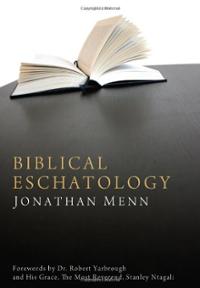The portion he published was a section from chapter two entitled "Progressive Revelation." Here it is:

Graeme Goldsworthy states an important hermeneutical point, “It is impossible from the Old Testament alone to understand the full measure of God’s acts and promises that it records.” The reason why the OT alone does not convey its full, underlying meaning is the doctrine of progressive revelation, i.e., the truths of the Bible were not revealed all at once but were progressively revealed over time. Thus, the OT is the preparation of the gospel; the Gospels are the manifestation of the gospel; Acts is the expansion of the gospel; the Epistles are the explanation of the gospel; and Revelation is the consummation of the gospel.
Jesus and the NT authors understood this. They saw the entire OT as in some way a book about Jesus. He is its central person and integrating theme and is “the final and the fullest revelation of what the promises are really about.” Because the Bible ultimately is the story about Jesus Christ, who is explicitly revealed only in the NT, the NT writers generally look at the OT in a “typological” way. The NT reveals that OT Israel as a nation, and all of its laws, ceremonies, and institutions, and the OT prophecies concerning it, were “types,” “symbols,” “shadows,” “copies,” or “examples” of NT realities that were fulfilled and superseded in Christ and his church. Willem VanGemeren points out, “The coming of our Lord radically altered the understanding of the Old Testament. The apostles understood the canon in the light of Jesus’ ministry, message, and exaltation. The traditional understanding of Moses’ words and the Prophets had to undergo a radical transformation in view of the coming of our Lord.”
Edward Young describes the transformative significance of Christ’s coming with respect to the issue of how to approach OT prophecies hermeneutically: “The revelations granted to the prophets had somewhat of the obscure about them. They are characterized as dreams and visions, and probably, enigmatic sayings. . . . Since the revelation granted to the prophets was less clear than that given to Moses; indeed, since it contained elements of obscurity, we must take these facts into consideration when interpreting prophecy. We must therefore abandon once and for all the erroneous and non-Scriptural rule of ‘literal if possible.’ The prophetic language belonged to the Mosaic economy and hence, was typical. Only in the light of the New Testament fulfillment can it properly be interpreted.” How the NT fulfills the OT “types” and promises is not self-evident. Goldsworthy points out, “It was not self-evident that Jesus fulfilled the Old Testament promises. Those Jews who looked for a literal fulfillment of the Old Testament promises failed to recognize Jesus as the fulfillment.”
Menn, Jonathan (2013-09-04). Biblical Eschatology (Kindle Locations 624-648). Resource Publications – An Imprint of Wipf and Stock Publishers. Kindle Edition.

No comments:
Post a Comment